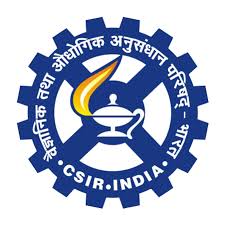INVITATION AND SCOPE
COMMITTEES
VENUE
KEY DATES
REGISTRATION AND FEES
ABSTRACT SUBMISSION
PUBLICATION
SCIENTIFIC PROGRAM
SOCIAL PROGRAM
GALLERY
SPONSORSHIP
CONTACT US
The Symposium will be hosted at Vivanta by Taj, Dwarka, New Delhi. This stylish, modern hotel is one of the most opulent business hotels in New Delhi and offers a calm and peaceful retreat for business and leisure travellers. The amenities include two trendy restaurants, a bakery and a cocktail bar, plus a sleek lounge and a business centre. There is also a spa, a gymnasium, an outdoor swimming pool, a baby pool, a salon and a sundeck. Spanning across seven acres, the hotel is conveniently located near the Indira Gandhi International Airport (11 km) and is walking distance (0.5 km) from the Dwarka Sector 21 Metro station.
For more details visit : Vivanta by Taj - Dwarka
New Delhi, the capital of India, is one of the eleven districts of the city of Delhi. Situated in the Indo-Gangetic plain in northern India, Delhi is one of the fastest growing cities in the world. It is India's largest metropolis by area, and the third largest in the world in terms of population. Delhi is a place where the ancient and the modern blend seamlessly together. The city is dotted with ancient historical monuments, forts, tombs and colonial era buildings along with soaring skyscrapers, posh residential colonies and bustling commercial complexes.
The history of this city can be traced back to the Mahabharata (~1000 BCE), the great Indian epic which describes the dynastic struggle between the estranged cousins, the Kauravas and Pandavas. Indraprastha, believed to be located in the region of present-day New Delhi was the capital of the Pandavas. Since then this city has been an important political centre and the capital for successive dynasties between the 13th and 17th centuries. Delhi became the capital of the Delhi Sultanate under the Slave Dynasty started by Qutb-ud-din Aibak in 1206. This was followed by rule of several dynasties such as the Khiljis, Tughlaqs, Lodhis and Mughals. The British started establishing their colony in India from the 18th century and Delhi passed into the direct control of British Government in 1857. New Delhi was built by a British architect Edward Lutyens in 1912 as the new capital of the British Raj. Post independence in 1947, New Delhi became the capital of Independent India.
The weather in Delhi during November is pleasant with the average high and low being 28 and 12oC.
English is generally used for official and business purposes. Though Hindi and Punjabi are the most widely spoken languages, English is well understood.
As the major cultural, commercial and political centre of India, Delhi is well connected to the rest of the world through regular flights from the Indira Gandhi International Airport. Public transport systems in Delhi include the Delhi Metro, CNG fuelled buses, taxis and auto rickshaws. There are several historic landmarks to visit in Delhi. Some of these include the Red Fort, Qutab Minar, Purana Qila, Humayun's Tomb, India Gate, Jama Masjid, Bahai House of Worship or Lotus Temple, and Jantar Mantar. It is also home to several museums such as National Gallery of Modern Art, National Museum of Natural History, National Rail Museum, National Crafts Museum, Shankar's International Dolls Museum.
New Delhi is the preferred starting point for the popular Golden Triangle tour that comprises of New Delhi, Agra and Jaipur. The distance of New Delhi from Agra and Jaipur is 210 km and 268 km, respectively. Agra is renowned for its magnificent monuments from the Mughal era -Taj Mahal, Agra Fort and Fatehur Sikri, all of which are UNESCO World heritage sites. The vibrant city of Jaipur is an ideal tourist destination owing to splendid fortresses, majestic palaces, beautiful havelis and colourful bazaars filled with ethnic attire, hand-dyed and embroidered textiles and pretty jewellery.




























